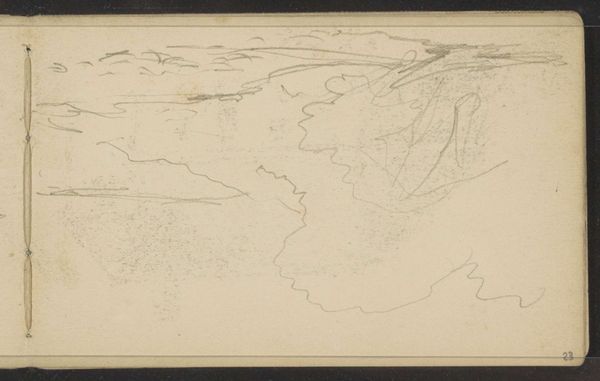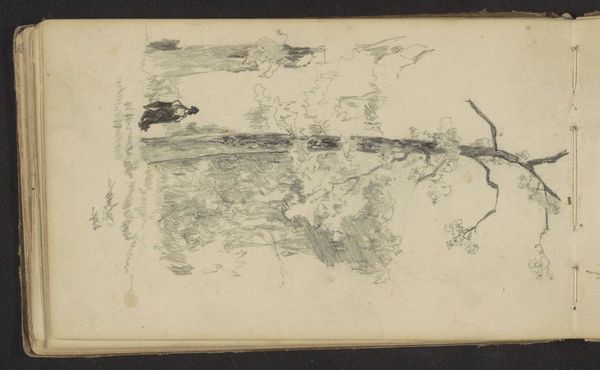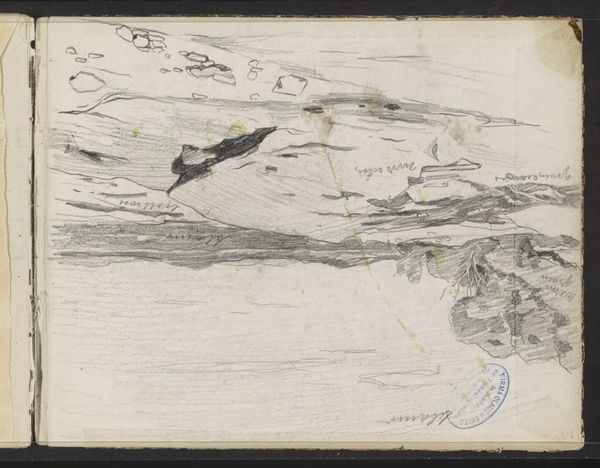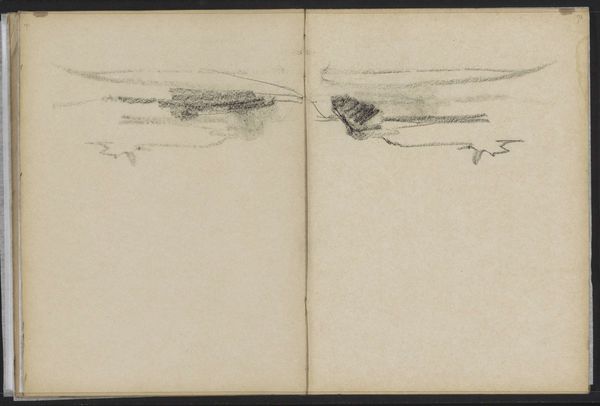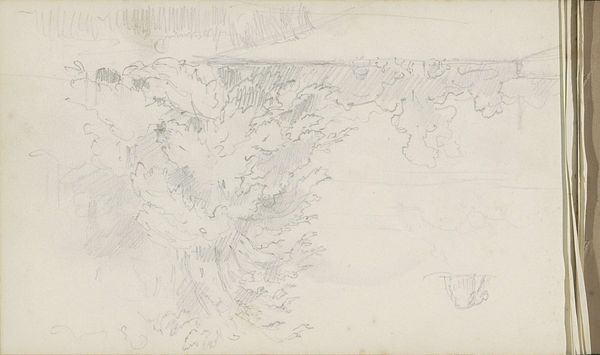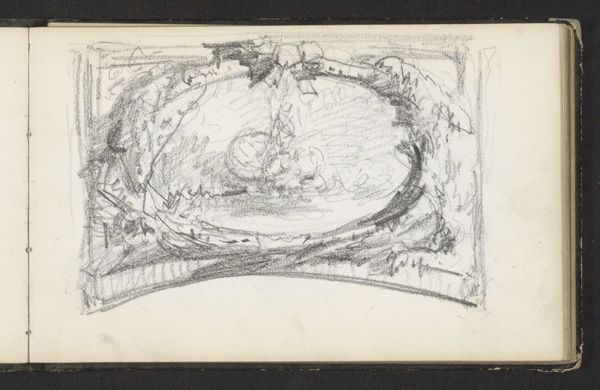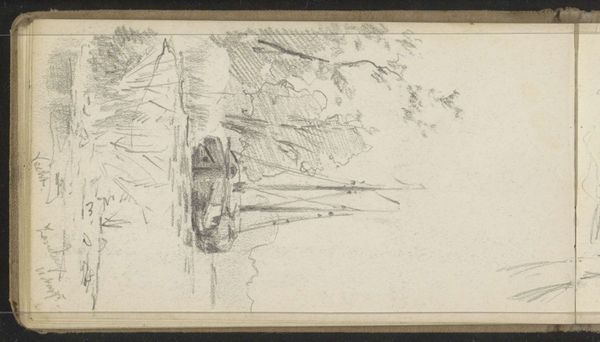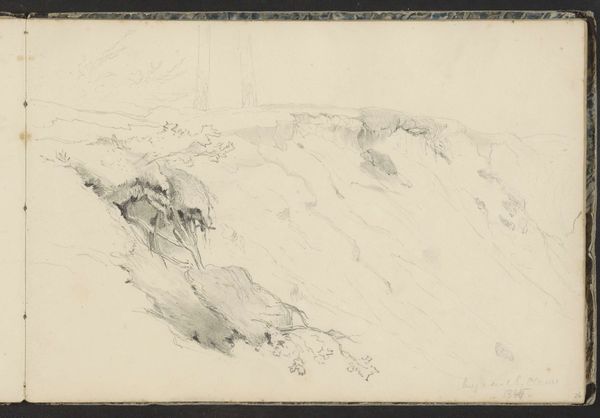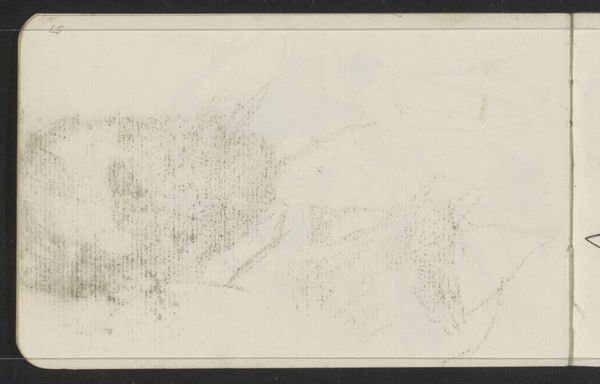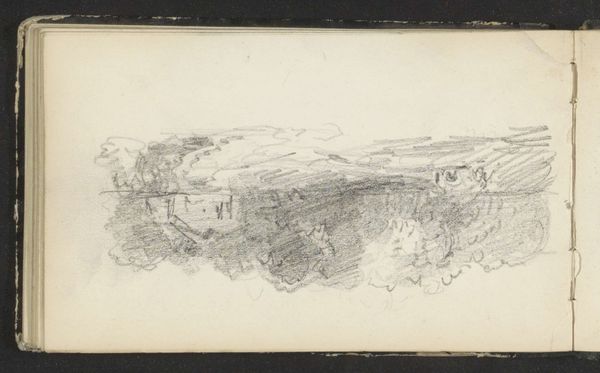
Copyright: Rijks Museum: Open Domain
Editor: So this pencil drawing, "Path in a Landscape," by Johan Hendrik Weissenbruch, probably done between 1834 and 1903, has this dreamlike quality, almost like a memory fading. I'm really struck by how minimal it is, yet it evokes so much space. How do you interpret this work? Curator: I'm drawn to how Weissenbruch uses such simple lines to evoke a sense of timelessness. The path itself becomes a potent symbol. What does it represent to you? Consider that paths, culturally, can stand for life’s journey, choices, destiny, and the connection between the past and future. Editor: That's a really interesting idea! It makes me think about how we construct our own narratives and project them onto the landscape. So, maybe the path isn’t just a physical road, but also represents individual experience? Curator: Precisely. And notice the way the landscape is almost circular, enclosed. Doesn’t that form remind you of ancient cosmologies? Or perhaps a world viewed through a lens or even memory? The circle itself, devoid of beginning or end, may represent cycles, wholeness, and eternity. It makes one consider the psychological implications, too. The artist uses recognizable conventions of the romantic landscape to explore their place in it. Editor: It’s fascinating how those simple forms can open up these really profound ideas about perception, experience, and symbolism. Curator: Indeed. The image seems simple, yet invites layered exploration and consideration about what resonates across time. What lingers with you most about this work? Editor: For me, it’s the feeling of quiet contemplation and a kind of connection to something larger than myself. Curator: A valuable sentiment. Weissenbruch’s sketch embodies both realistic landscape and enduring symbol.
Comments
No comments
Be the first to comment and join the conversation on the ultimate creative platform.
